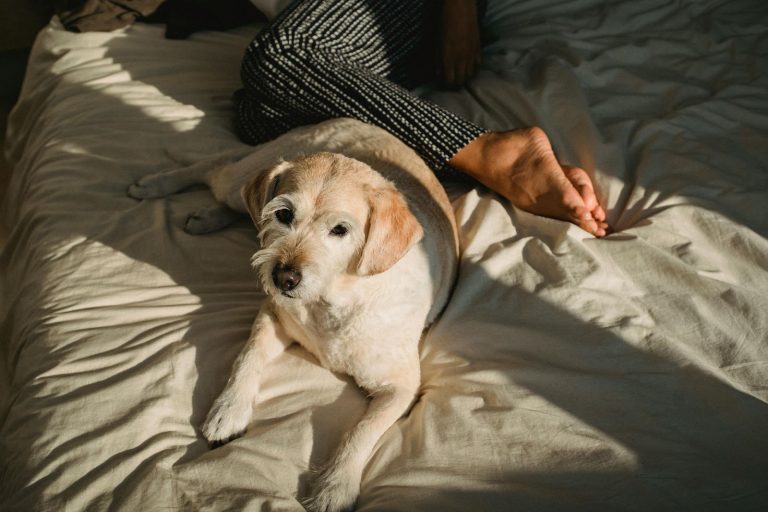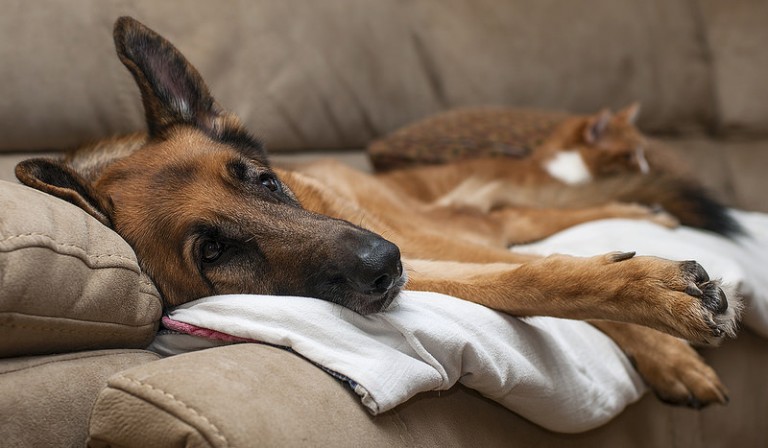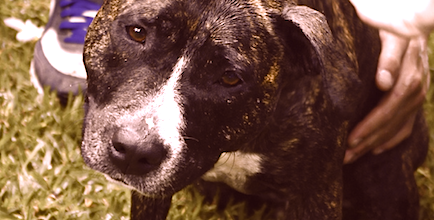Want to Feed Your Pet a Home-Cooked Diet? Do Your Homework.
Think you can just throw some chicken and brown rice together, change up the veggies now and then, toss in a vitamin and call it balanced? Think again.

Nutrition and food — definitely one of the hottest and most controversial topics out there.
My clients don’t understand why I can’t give them a simple answer when they ask, “Is this a good food, Doc?” Or, “I want to make my own dog food. It’s cheaper and better, right?”
It’s a food jungle out there, and when you’re trying to find your way, you can feel like you’re suffocating in quicksand.
Family, good times, happiness… and food. These things go together. Many of us include our pets in this circle of life. What they eat, and how we serve it, is important to us. So we ask ourselves questions:
- What does that label on the bag mean, anyway?
- How hard can it be to cook for my pet?
- Is that food really worth it? Is this one better than that one?
- It’s just safer to cook for my pet, right?
(Let’s leave the entire topic of raw food, its merits and problems, for another day. Leave it at this: Balance is still an issue in raw diets and you have to do your research.)

Don’t leave your pet’s safety to chance
Sign up for Petful recall alerts today.

Commercial or Home-Cooked?
Both diets have their own set of problems. Finding a healthy commercial diet may be easier than developing a balanced, home-cooked diet that meets all requirements. If you’re set on home cooking, you have to do some homework.
The vast majority of commercial diets meet AAFCO requirements and are technically not deficient in any necessary nutrient. But quality of ingredients, how the requirements are met, the possibility of toxins and suspect manufacturing practices are big concerns for many pet owners.
For the homegrown doggy chefs out there, meeting those pesky nutritional requirements can be a challenge. Although you control the quality of ingredients, many recipes are deficient or not well balanced. Despite an owner’s best efforts to meet all guidelines, recipes can be misleading or require you to make assumptions in the preparation that may mess up the balance, big time.
A recent study just published by boarded veterinary nutritionists looked at hundreds of home-prepared diets and carefully analyzed 67 of these diets — some formulated by veterinarians, others found in textbooks or printed on popular websites. Only three of these diets provided ALL essential nutrients in concentrations exceeding the National Research Council’s Recommended Allowance (NRC RA). Nine diets met AAFCO requirements. All nine of the diets that met all requirements were written by veterinarians.
Why Home-Cooked?
- You have more control over what your pet eats.
- You may distrust commercial food companies.
- You believe the diets are more natural.
- You may be addressing a particular disease such as kidney, liver, allergy, etc.
The Real Deal on Home-Cooking
- Usually more costly (if done correctly)
- More time-consuming
- Less convenient
- Big risk of nutritional imbalances
- Necessitates assumptions or judgments by the cook that may add to the imbalances
People say to me that “chicken on sale” is cheaper than buying high-quality pet food. So they want to make their own food. But “Buy One, Get One Free” legs and quarters are not the answer to your Top Dog Chef fantasies, by a long shot.
I’m not only talking about the quality of the chicken alone. Even if you use free-range chickens that pecked at the best organic feed imaginable, took long siestas in designer hen habitats in life, and met a painless and compassionate end in death, you still have many nutrient requirements to meet. Organic still must be well balanced. Natural must also be nutritious.
Do you know how to calculate total energy in your natural pet food? Caloric density? Is the calorie distribution for protein, fat and carbohydrates met? Are the concentrations of crude protein, amino acids, minerals, vitamins, linoleic acid, and the combination of EPA and DHA sufficient and appropriate? Not to mention zinc, choline, copper and calcium, the nutrients found to be deficient in more than 50% of the diets studied.
If you thought you could just throw some chicken and brown rice together, change up the veggies from time to time, throw in a vitamin and some calcium, and go feed Mr. Tibbs a meal made for a dog-king, think again. Your recipes have to be checked out scientifically if you plan on a DIY diet as the sole source of sustenance.
Variety Is Not the Spice of Dog Food

Many of my clients believe that if you rotate and add variety to home-prepared diets, you will guard against all deficiencies. This study says that is not true. Rotating up to 10 of these recipes, from three completely different groups of ingredients, still produced diets with considerable deficiencies.
Of the diets studied, ALL of the those written by nonveterinarians were deficient and SOME of the veterinarian-written recipes were deficient. Some of the nonveterinary diets were so severely deficient that certain ingredients did not reach 50% of the NRC RA.
The only diets not deficient were those written by board-certified veterinary nutritionists. (These experts become veterinarians after four years of study, and then do a residency in nutrition and pass national boards in veterinary nutrition.)
So when a client asks me to look at a pet food label, or read a piece of paper with a diet scribbled on it, and tell them whether the diet is “good” or not, I can’t say! And there’s a good reason I can’t say. The diet needs to be quantitatively assessed via computer-based analysis, and/or assessed via laboratory analysis — two processes I don’t have at my fingertips in the back of my office.
Barf on you, nutritional deficiencies, you call-of-the-wild folks might argue! Wolves and feral cats don’t eat food with the AAFCO seal of approval on it, and they have thrived for centuries. You would be right. But wild counterparts of dogs and cats also live much shorter lives than our friends on the couch, and some suffer from malnutrition and nutritional deficiencies.
Kitchen Nightmares
The preparation of these diets can indeed be a nightmare in terms of keeping them balanced and adequate. Most people make one or more wrong assumptions during the course of feeding home-prepared foods.
Chicken thighs are not the same as chicken breasts; fat and protein content vary considerably. How much skin do you include in your diet? What if you change from chicken to turkey? Do you add salt to the quinoa before or after cooking, or not at all? Were you baking and now are poaching? Aren’t they the same? No. Substitution of ingredients may seem fine to the chef, but not to the pet’s well-being.
Because these diets become costly, many folks begin to omit supplements that may be extremely important. The list of seemingly small assumptions can lead to big deficiencies.
Let’s Eat!
I prefer my clients to mix high-quality commercial foods with some fine down-home, healthy cookin’, but I respect people who have the strong DIY gene and want to feed home-prepared food exclusively. To these folks, I recommend they visit a website called BalanceIt to get their nose wet, and seek the help of a boarded veterinary nutritionist.
If you want to get information on a variety of ingredients because you want to feed home-cooked food exclusively, your recipe(s) should be checked out professionally.
When I was a young girl, my family had a rather nasty little French poodle named Pepe. He lived to be 17 and ate dog food mixed with “people food.” After dinner, my grandmother would let Pepe sit at the table and instruct him to say “HOM-BURR-GAH.” When Pepe said, “RAA-RAA-RAA,” Minny got Pepe’s turquoise plate out of the cupboard, the “Pepe scissors” out of the drawer, and cut up tiny pieces of delicious roasts, potatoes and vegetables as Pepe sat waiting.
I never understood the scissors and the perfectly diced morsels — Pepe could have eaten the entire roast in a gulp. I guess it was the joy my grandmother felt when preparing a meal for the little French poodle who hated the new little person in the house (me).

This pet health content was written by a veterinarian, Dr. Debora Lichtenberg, VMD. It was reviewed for accuracy by Dr. Pippa Elliott, BVMS, MRCVS, and was last updated Feb. 4, 2019.







